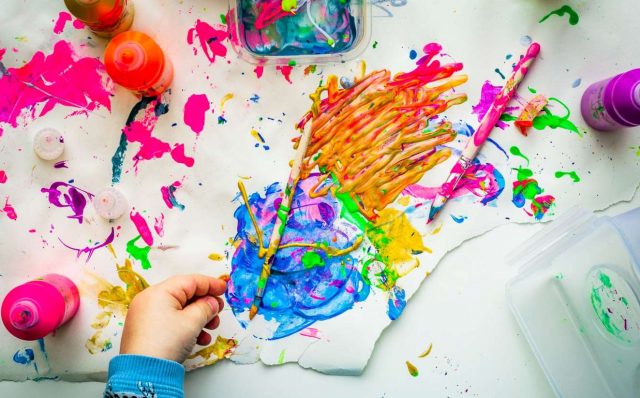When you’re looking after a disabled child, you may need access to medical support. With the help of great health care, you can support your child to thrive, despite their difficulties.
When you have excellent medical care, you’ll remove barriers for your child.
Unfortunately, not all health practitioners provide high-quality care. This can cause negative repercussions, for both the child and their family. If your child has been affected by the malpractice of a doctor, you may need the help of a medical negligence solicitor.
Art therapy is an excellent form of healthcare support for disabled children. Here, we’ll discuss 8 benefits of art therapy for disabled children. Before we dive in, let’s establish the basics.
What is art therapy?
Art therapy involves making art, but as a practice, it’s a whole lot more than that. It’s about creating artwork with the guidance of a trained therapist. It’s the therapist’s role to guide the child, helping them to express and regulate challenging emotions.
Using expressive art, both children and adults can work through difficult feelings. Art therapy is about reaching new perspectives. The aim is to enable the participant to build resilience and self-confidence.
Art therapists work with many different materials, they might use paint, pastels, paper, fabrics, or clay. The practice extends beyond creating physical artwork, it can also involve puppetry, storytelling, dance, or music.
Why is art therapy useful for disabled children?
For disabled children, art therapy can provide an outlet for communication and expression. Art therapy can remove problems caused by communication issues or language barriers.
The practice of art is largely subjective, and this is helpful for children with disabilities. Subjectivity removes the pressure of having to ‘be like everyone else’. With the help of art therapy, disabled children can express their thoughts.
Art therapy is often recommended for children with autism, learning disabilities, behavioural issues, or ADHD.
What are the benefits of art therapy for disabled children?
1. An outlet to express emotions
There are many different types of disabilities, from physical disabilities to learning difficulties. No child is the same, yet certain types of learning difficulties are defined by specific traits. For example, children with autism can experience intense emotions and communication challenges.
Art therapy can help disabled children to healthily express their emotions. During tense times, creating artwork serves as a therapeutic outlet. Some disabled children communicate non-verbally, and for these children, communicating through art can be incredibly empowering.
2. A form of relaxation
Disabled children may feel that they are ‘different’ from children who do not have physical or learning disabilities. These feelings can make disabled children feel anxious and stressed out. To soothe their angst, art therapy can be a great form of relaxation.
Learning how to relax is a valuable life skill for all children. When you provide children with stress coping tactics, you’ll be supporting their mental health.
3. Increasing attention span
Creating art helps to stimulate the brain, which elevates dopamine levels. Dopamine can help to improve concentration, which can be useful for many children with learning disabilities.
All kids can benefit from having a great attention span. Paying attention for longer helps children to focus at school, and learn new things.
4. Improve cognitive abilities
Art therapy is used to help disabled children to improve their cognitive abilities. When children practice creativity, they are stimulating the frontal lobe. This part of the brain is associated with memory and problem-solving.
With the help of artistic practices, therapists can support disabled children to enhance their cognitive capabilities.
5. Boost self-confidence
For disabled children, self-confidence can sometimes be a struggle. The great thing about art is there’s no ‘right’ or ‘wrong’ way to do it. Children have the chance to create on their own terms. When constraints are removed, there’s more room to gain self-confidence.
6. Support communication
Some disabled children are non-verbal, and so they must use other means to communicate. Many people misunderstand what it means to be non-verbal. Non-verbal children can be highly intelligent, so these kids must have the means to express their ideas.
Art therapy can be used as a communication tool for children with non-verbal autism Guiding these children with art helps them to be understood, despite their limited capability for language.
7. A tool for trauma
Art therapy is used with both disabled and non-disabled children who’ve experienced trauma. For example, one modern technique that’s used is called ‘Mindfulness-Based Art Therapy’. The practice combines mindfulness and traditional art therapy, to help children work through traumatic events.
Mindfulness-based art therapy is useful for adults and children alike.
8. Improving fine motor skills
Many disabled children struggle with fine motor skills, to varying extents. Practising art therapy is a fantastic way to improve fine motor skills. Art activities are varied, from gripping a paintbrush to shaping clay or moving to the rhythm of the music.
Using artistic activities, therapists can help disabled children to improve their fine motor skills, in a fun and accessible way.
The takeaway
As you can see, there are plenty of benefits of art therapy for disabled children. Using the combination of art and therapy, disabled children can express emotions, improve fine motor skills, and build self-confidence.
The best thing about art is that its subjective, children don’t need to feel restricted. Art helps us to remove rules and boundaries. Many disabled children have emotional issues, and art therapy is the perfect activity for stress relief.
From dance to storytelling, drawing, and making collages, there are plenty of creative options to explore.

Speaks from heart, always too passionate and driven by emotions. Spins the words with kindness & sharpness, intriguing your ever-inscrutable minds.



